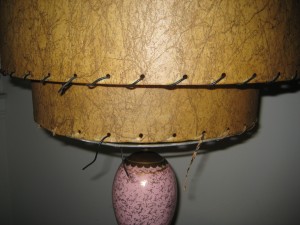Have you ever watched a janitor replacing fluorescent light bulbs? They change all of them, whether or not they are burned out. The opportunity cost of climbing up on that ladder is high enough that it outweighs the time remaining in the still-working bulbs (which is probably short since they were replaced en masse last time).

I thought about this when I rediscovered my Googie side lamps from the 50s which had been stuck in the attic during a remodel. Soon after I acquired these, the rawhide laces in the shades were starting to fray so I went to Mendel’s in the Haight and got replacement laces. Foolishly, I replaced only the laces that had broken. Now the rest of the laces are shot and I have no idea where the rawhide went, so I’ll have to buy more and this time I’ll be smart enough to replace everything.
A parallel lesson comes from Keith Campbell, who was my client and president of the Federated Group of home entertainment stores back in the day. Keith never went to college but he knew that when he found something wrong in a store–say, a sloppy warehouse of A/V equipment that makes it difficult to find what a customer wants–it is typical of a larger problem. A manager wouldn’t be careless about that and careful about everything else. The whole system needs to be taken apart and examined.
Think about things as a system, not a series of one-off events. You may discover some problems… or, opportunities… in your own marketing.
You are not kidding. I notice that if there’s something that’s not right with the creative, that’s usually the tip of the iceberg for some much bigger problems below the surface, including database or mail strategy or website.
Likewise, if i hear that they have some other problem that is operations oriented like late order fulfillment or high return rate, that’s an indication that the patient has more problems than this boo boo on their hand – it’s probably more like an internal illness that’s effecting all the organs, so to speak.